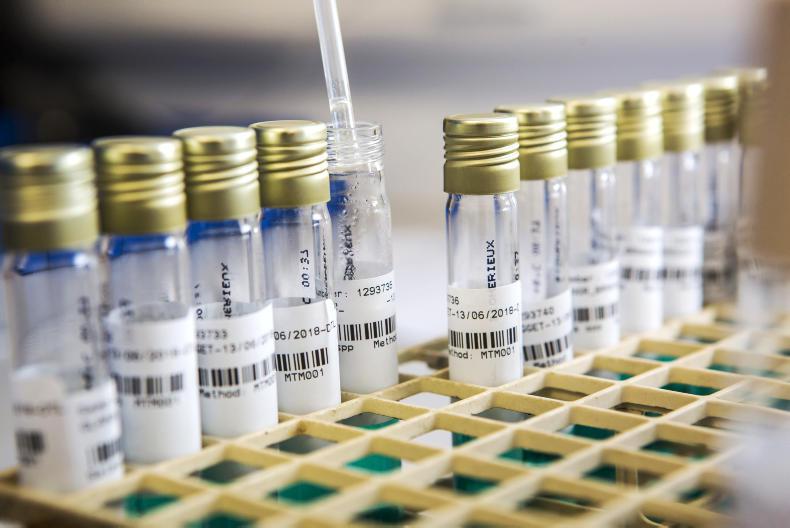Results of testing carried out for banned substances and medicine residues in animals and agricultural products by the Department of Agriculture in 2019 returned a compliance rate of 99.69%.
The high compliance rate is in line with previous results under the National Residue Control Plan (NRCP), with similar rates stretching back to 2013. The Department welcomed the continued high level of compliance as an indication of the responsible approach adopted by the vast majority of farmers.
In total there were 16,911 samples taken last year from eight food-producing species as well as milk, eggs, and honey. The majority of these targeted samples were taken from animals or products more likely to contain illegal residues.
Breaches
Fifty-three samples that failed to meet the required standards were detected by the Department. Risk evaluations carried out by the Food Safety Authority of Ireland (FSAI) found that there was no unacceptable food safety risk to consumers.
Almost half of all issues related to residues of authorised veterinary medicines. Of those, 10 samples breached limits for antibiotics which are set in excess of those required by EU legislation. A total of 6,126 samples were taken giving a non-compliance rate of 0.16%.
The issues were detected in eight cattle carcases that were picked up by Department inspectors in slaughter plants, and eluded form the food chain with the other two found in bovine milk.
Wormers and doses
Fourteen of the samples contained residues of anthelmintics which are wormers and doses used to treat parasites. The detection of these samples indicates that the withdrawal periods were not observed or incorrect administration had occurred.
The detection of Thiouracil was the second most common issue. It was found in 18 animals including 15 cattle, two sheep, and one pig. Its presence may indicate the use of growth promoters banned in the EU, however, Department investigations concluded no illegal administration had taken place.
The low levels found in the animals was more likely attributable to environmental or dietary factors, such as a diet high in kale.
Overall, extensive testing and subsequent investigations carried out found no evidence of the illegal use of banned growth promoting hormones or other banned substances to food-producing animals.






 This is a subscriber-only article
This is a subscriber-only article










SHARING OPTIONS: